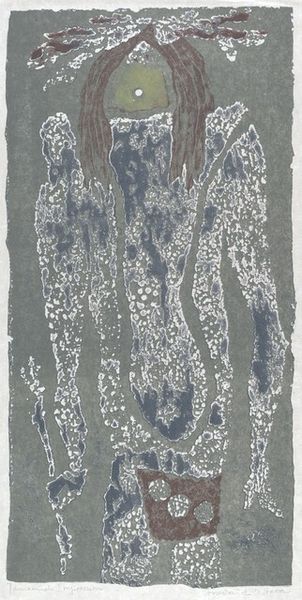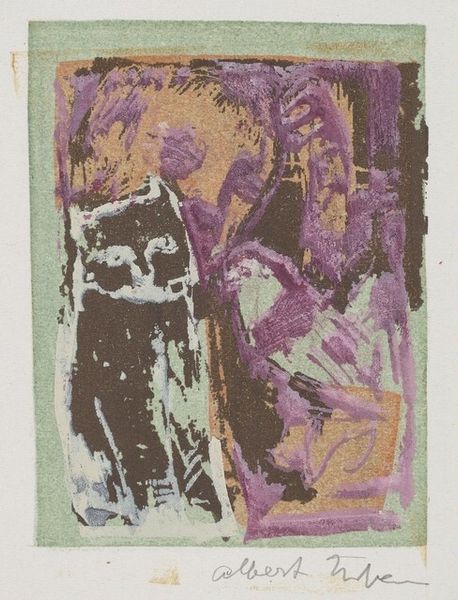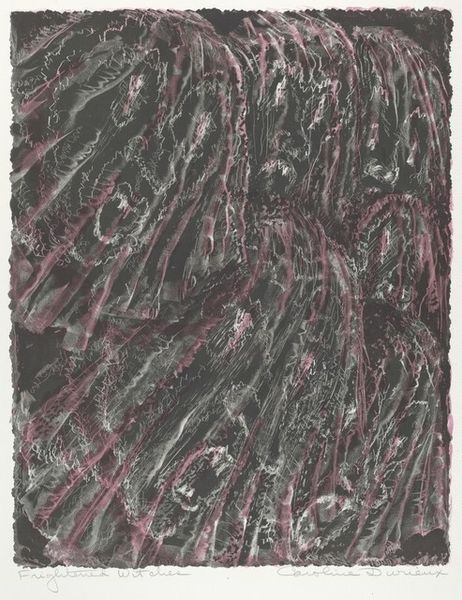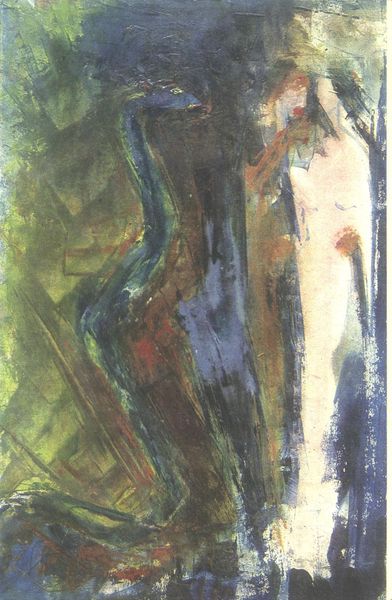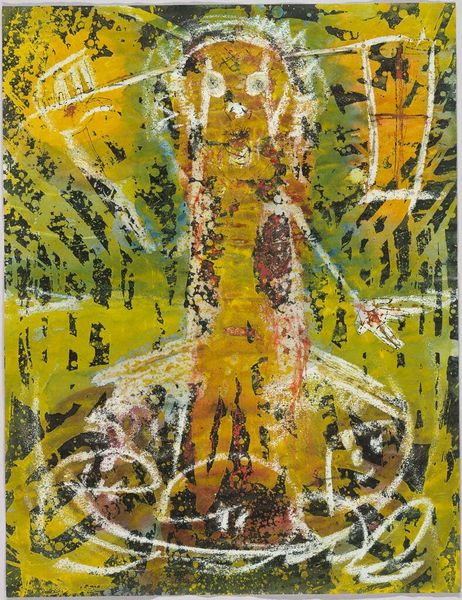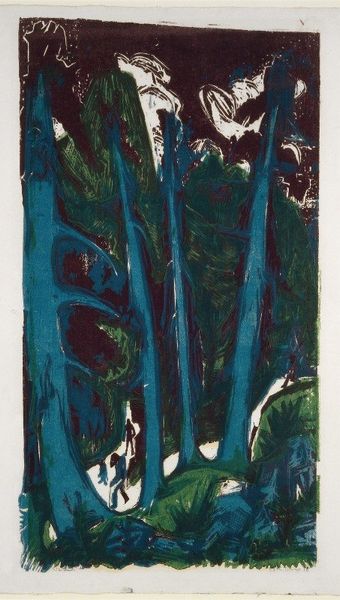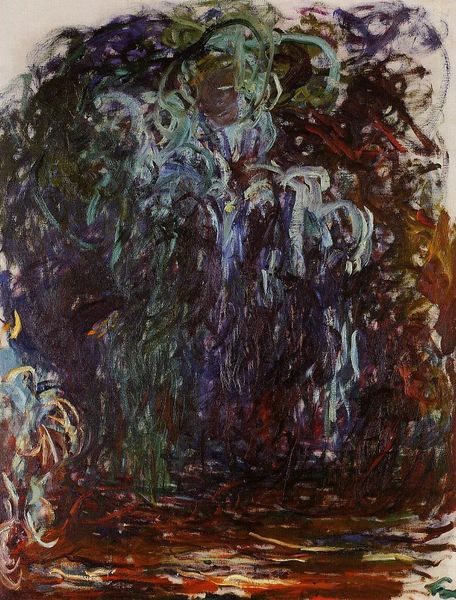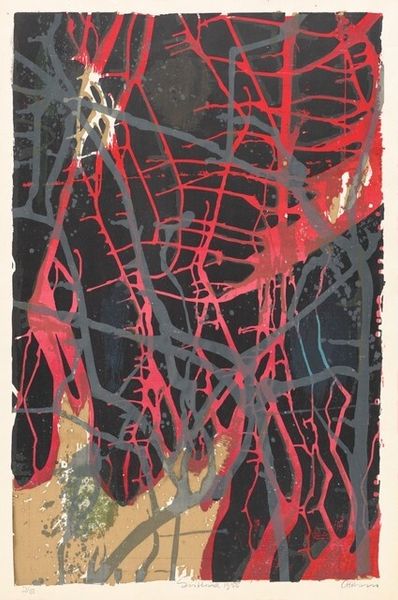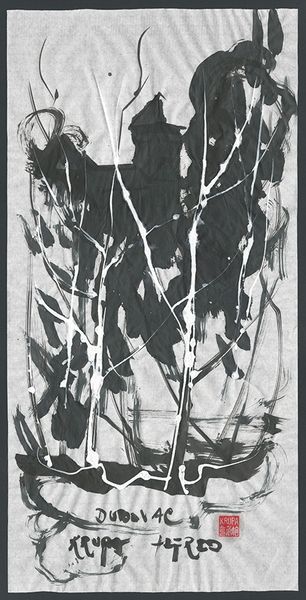
print, woodcut
#
tree
#
naturalistic pattern
# print
#
landscape
#
german-expressionism
#
figuration
#
forest
#
plant
#
expressionism
#
woodcut
#
naive art
#
line
#
watercolour illustration
Copyright: Public domain
Editor: Looking at Ernst Ludwig Kirchner’s “Firs,” a woodcut print, I'm struck by how the colours, while somewhat muted, create this almost oppressive feeling. The sharp lines and contrasting colours remind me of how landscapes are impacted by environmental policies. How do you interpret this work, and do you see this contrast playing into the theme? Curator: Kirchner's expressionistic style, particularly evident here, often reflects a broader anxiety around modernity. It’s less about environmental policy specifically, and more about the alienation from nature that industrialization and urbanization produced. Do you notice how the distorted forms and the somewhat clashing colours – the purples against the stark whites – might evoke a sense of unease or even a kind of wounded landscape? Editor: Yes, I do. It's as if the trees are struggling, reaching upwards in a desperate plea, which resonates with the way marginalised voices often have to fight to be heard within the chaos of societal injustice. Curator: Exactly. It also aligns with the Die Brücke artists’ broader interest in challenging bourgeois values. This raw, unidealized depiction of nature can be seen as a rejection of traditional, romantic landscape painting. How might you connect this to Kirchner's other works, which often explore themes of social alienation and psychological distress? Editor: I see what you mean; it's not just about pretty trees but using the forest to express something darker about the human condition and how our actions have ramifications beyond what we see. I see it as an extension of the artist's struggle, mirroring it with this vision of natural deterioration. Curator: Absolutely, framing “Firs” as more than just a landscape allows us to understand its socio-political layers. It reveals how German Expressionism employed the natural world as a potent tool for critiquing modernity. Editor: Thank you, it’s great to see how it connects back to society as a whole, which made me reflect on environmental issues that remain so critical today.
Comments
No comments
Be the first to comment and join the conversation on the ultimate creative platform.

